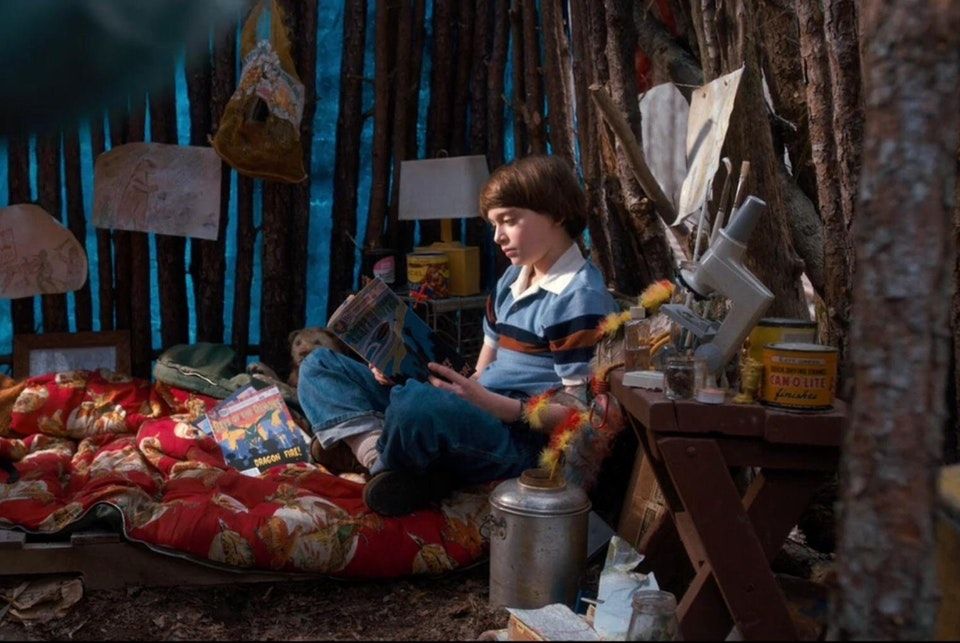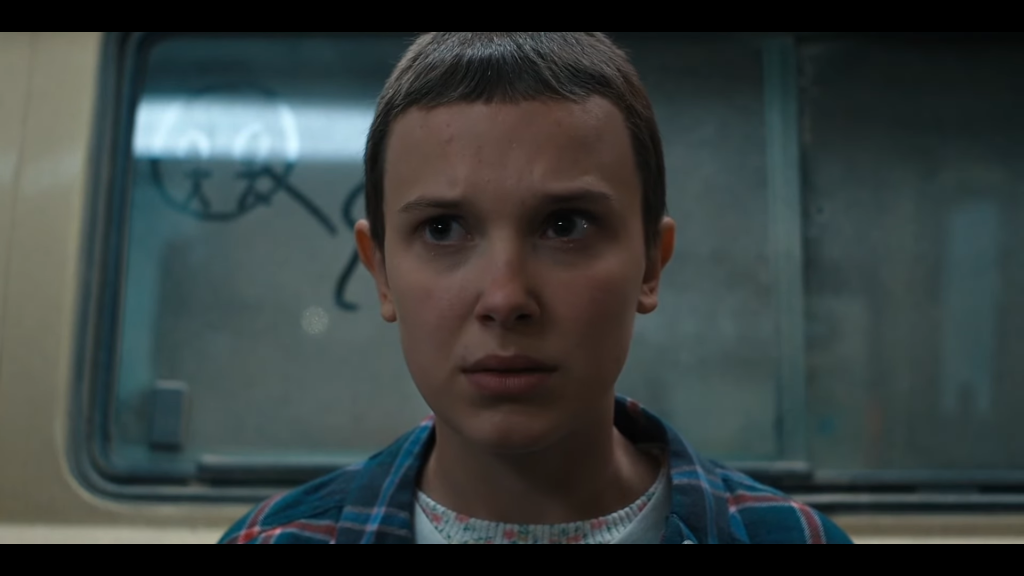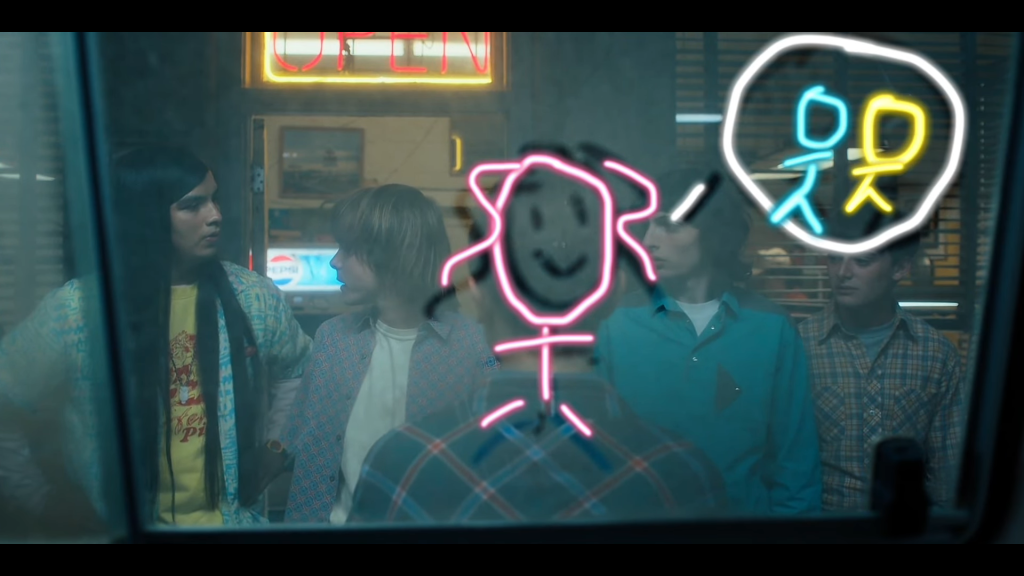Stranger Things is a great example of a show that utilizes its environment to its advantage by having the characters’ interactions with their surroundings used to their full potential. Whether it be a mall with a secret Russian base built underneath it or using a pizza freezer as a sensory deprivation tank for the climax of the season, the show makes sure to tie its set into the plot. One overarching theme that we can see referenced throughout the show in non-verbal ways is Will Byers struggles with depression, sexuality, and growing up.
There are two scenes that I think are really powerful in conveying that, with the first one being from season three, episode three. Will returns from the Upside Down, which I’ve previously discussed as being a metaphor for his depression, and he expects to come back to the world the same way it was when he left. He expects his friends to play Dungeons and Dragons with him only to find that his friends are more interested in girls at this stage in their lives. After repeatedly suggesting that the gang play D&D again, Mike and Lucas get frustrated with Will and tell him that it’s no longer cool to play tabletop games.

After the fight, Will rides his bike to their childhood hideout, a small structure built out of branches, lovingly titled “Castle Byers” on the outside. As he looks around the interior, flashbacks are shown from season one where all the boys were happily playing D&D together, completely innocent to the horrors that would soon unfold. This was a great choice to include flashbacks because it shows a side-by-side comparison of where the characters are now and where they started, as well as helping the audience empathize and understand that Will is reminiscing on better memories. He then picks up a photo of the gang on Halloween when they were all younger, and his chest begins to heave like the start of a panic attack before he rips the photo in half, showing the divide that has come between him and his friends. Being surrounded by all those memories and realizing that what once was would never come back, that everyone close to him has grown up, left him behind, and ridiculed him for still being in a stage of his life they deem immature, drives him to take a baseball bat and destroy the castle. Will is yelling, “It’s all stupid!” as heavy rain pours down on him and thunder is heard in the background until the audio begins to fade out, much like how hearing loss can occur during a panic attack. The camera shifts from being stagnant to following his erratic movements as he destroys the castle, adding more emotion to the scene.
Will lost multiple formative years to being trapped in the Upside Down, and as a result, he holds resentment that he didn’t get the same experience growing up as his friends did. This closely aligns with how some people struggling with depression lose years of their lives consumed by their mental illness and end up lagging behind their peers. Everything about the destruction of Castle Byers represents the painful death of Will’s once innocent childhood, the frustrations of years lost, and how he has become overwhelmed with the harsh realities of adolescence and growing apart from those closest to him.
Within each season, there’s reference made to Will’s sexuality. It’s made more and more apparent how Will views Mike as more than a close friend, with season four amplifying this dynamic the most out of any prior season. In the opening sequence, Eleven catches the viewers up with what all has happened since her and the Byers family have moved states. Eleven points out how Will has been spending a lot of time on a painting but won’t show anyone, and she speculates that it’s for a girl before stating ‘I think there is someone he likes.’

The second scene to analyze comes later in this season and is particularly interesting in the way it’s framed. Eleven draws on a window a stick figure with long hair leading to a thought bubble, within it is two stick figures with short hair. Once Eleven turns around, it looks like the thought bubble is coming off of her actual head. And when the scene changes, the way it’s shot has Eleven in the middle and Mike and Will underneath the bubble, with all the characters perfectly aligned to her drawing. This is an extremely clever way to represent how observant Eleven is of Will’s feelings, even when nobody has verbally made any reference towards it. A visual break down on this semiotic and other theories relating to Will’s sexuality can be found in this video. (WP won’t let me hyperlink for some reason, https://youtu.be/DMQLKdCcRo0?si=XzvbjdR702qktsTC )

Whether it be an alternate dimension that serves as the show’s foundation, a hideout that serves as a manifestation of childhood, or a detail as easy to miss as a simple stick drawing, Stranger Things urges its viewer to think deeply about the world building and how it relates to the personal struggles of the characters within it.